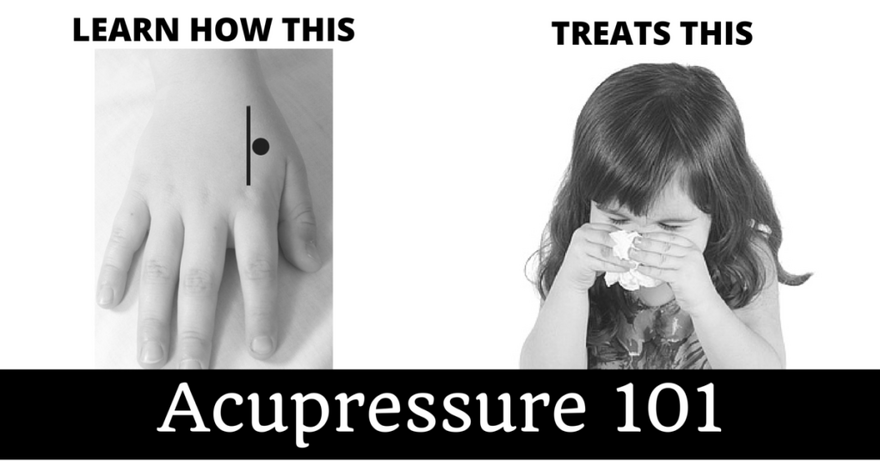
Have you ever wondered how pressing a point on your body has a healing effect?
For instance, how can a point on your hand treat a headache? Or a point on your leg can treat digestive problems? Is it possible that something this simple could be so powerful?
Your Energetic system
While acupressure may seem strange at first, when you understand the energetic system of your body it all makes sense. What is this energetic system? It’s a foundational concept in one of the oldest forms of medicine still around today – Traditional Chinese Medicine (TCM).
One of the key concepts in TCM is the idea that we have Qi and meridians.
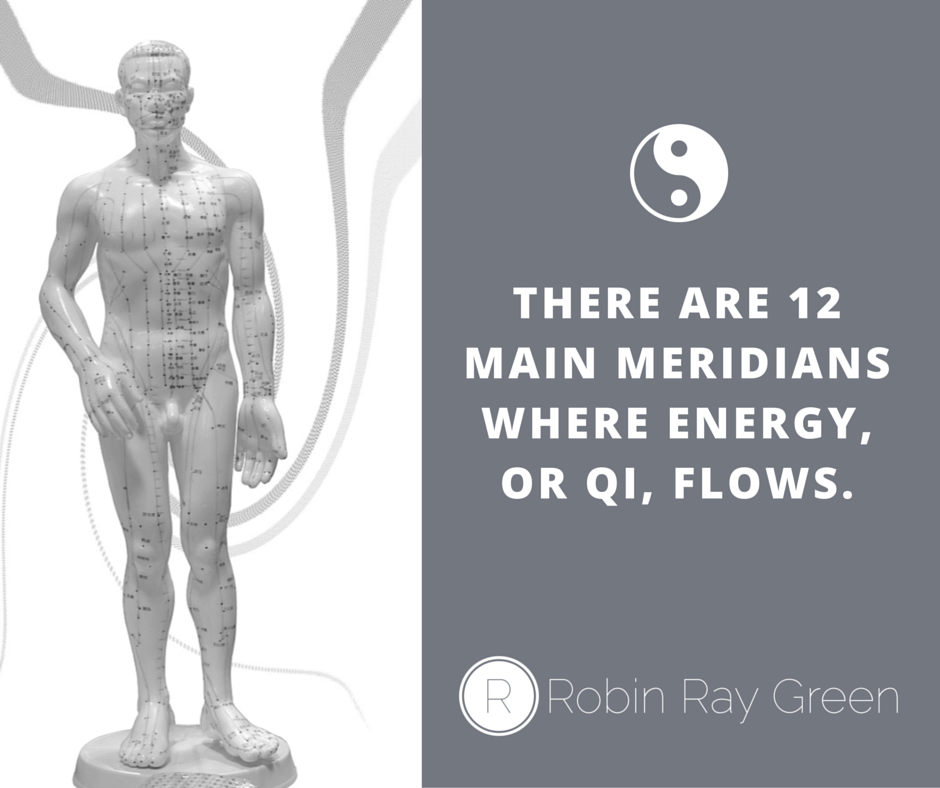
The word Qi (pronounced chee) can be translated in many different ways, but the most common definition is a vital force or energy that flows through our body. Qi flows within specific pathways called meridians. There are 12 main meridians that are distributed around the body internally and externally. They branch off into smaller and smaller channels, carrying Qi, or energy, to every organ, tissue, and cell in the body. It’s similar to the way arteries distribute blood to the whole body, but in the case of meridians, they carry Qi. The meridian system could be considered an additional system in the body akin to the nervous system or the circulatory system. Just as each system comprises a vast network that covers and connects the entire body, so does the meridian system.
Why a Point on the Hand Can Help Your Head (and More)
The reason you can use a point on your hand to treat your headache is because there is a meridian that travels from the hand to the head. The most powerful points on the meridians are located below the elbows and knees. While you can use acupressure points near a health problem, distal points, or points further down the meridian, are often very effective, too.
Pain and Illness Are Blocks in the Flow of Qi
Another important concept in TCM is that our health is a manifestation of flow. In order to be healthy and stay alive, our breath must flow in and out, our blood must flow in our arteries, and veins and nerve impulses must flow from synapse to synapse. In the same way, our Qi must flow unimpeded in our meridians. If our Qi becomes congested in one area due to trauma, whether emotional or physical, it can affect the body, mind, and/or spirit, thereby leading to pain, illness, or depression. Qi can also become congested or stagnant due to poor diet, lack of sleep, stress, or any number of issues that build up over a long period of time. If the water in the hose can no longer reach the flowers, the flowers will wilt and eventually die. To save the flowers, we must understand what’s causing the kink, then we can unkink the hose and restore the flow of the water to the flowers. Thus, restoring the flow of Qi in the meridians can resolve illness and restore health and well-being by creating balance in the body.
By using acupressure we can restore the flow of Qi to help resolve pain and illness.
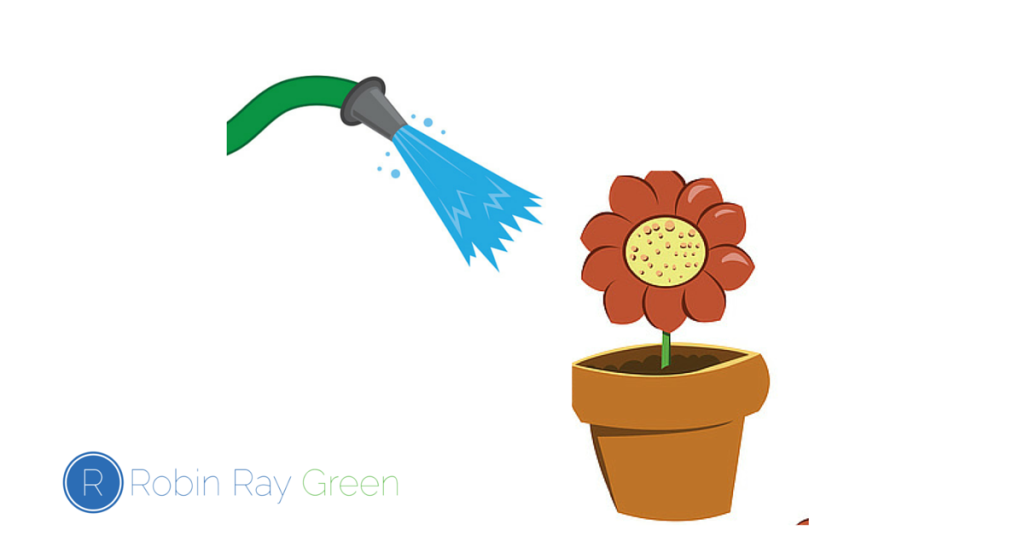
The Advantages of Acupressure
The advantages of using acupressure is that it is safe and effective, no special tools are required other than your hands, and you can do it anywhere. According to acupressure expert Michael Reed Gach, “Acupressure can be effective in helping relieve headaches, eyestrain, sinus problems, neck pain, backaches, arthritis, muscle aches and tension due to stress.” Acupressure can be safely used to augment any Western medical treatments your child is currently undergoing. However, if your child suffers from serious medical condition, be sure to seek medical care as needed by a qualified doctor or health practitioner. Acupressure cannot replace proper medical care.
Get the Acupressure 101 Guide
Learn How to Use Acupressure for Allergies & Colds
Guidelines for Acupressure
Each acupressure point is found by looking and feeling for what’s called “anatomical landmarks.” As you search for the point with your fingers, often you’ll sense a change in the way the muscle tissue feels, such as a knot or tightness or a dip in the muscle tissue that creates a bit of a hollow. The pictures in this guide will assist you in locating the point, then your fingers will help you find the location more specifically on your child’s body. Many parents I’ve worked with are concerned that they’re doing it wrong, but you don’t have to be! Acupressure is fairly forgiving, so even if you’re not exactly on a point, you’ll usually get close enough to the meridian for the pressure to still be effective. The size of the points vary—some points are about the size of a quarter while others are around the size of a dime. While there are several acupressure techniques that can be used, I find that firm pressure or firm pressure with kneading are the easiest ways to stimulate the acupressure points on children. Start with light pressure and gradually increase, then apply firm pressure for 10 to 60 seconds, depending on the child’s age. The pressure should be firm, without causing any pain. Every child’s optimal level of pressure will be different. Some children like extremely firm pressure, while others prefer a very soft and gentle touch. In addition, each area of the body will have a different sensitivity and require different amounts of pressure. Rest assured, the amount of pressure is not related to how effective the acupressure session will be.
Here are the general guidelines for the amount time to apply pressure:
- For up to 12 months: 10 seconds
- For 1–2 years: 20 seconds
- For 2–4 years: 30 seconds
- For 5–6 years: 40 seconds
- For 6 years and up: 50 or more seconds
Fore more information and complete instructions on using acupressure, be sure to download our acupressure guide. Reference: Gach, M. R. (1990). Acupressure’s potent points: A guide to self-care for common ailments. New York: Bantam Books.


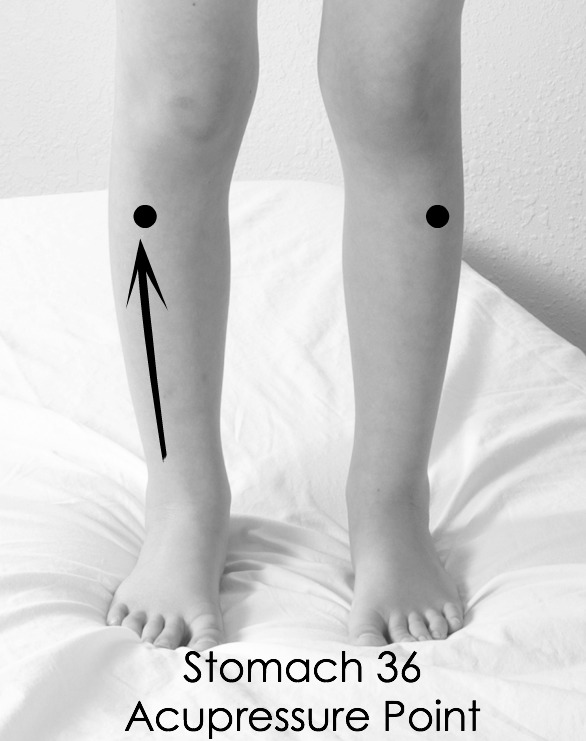
Comments